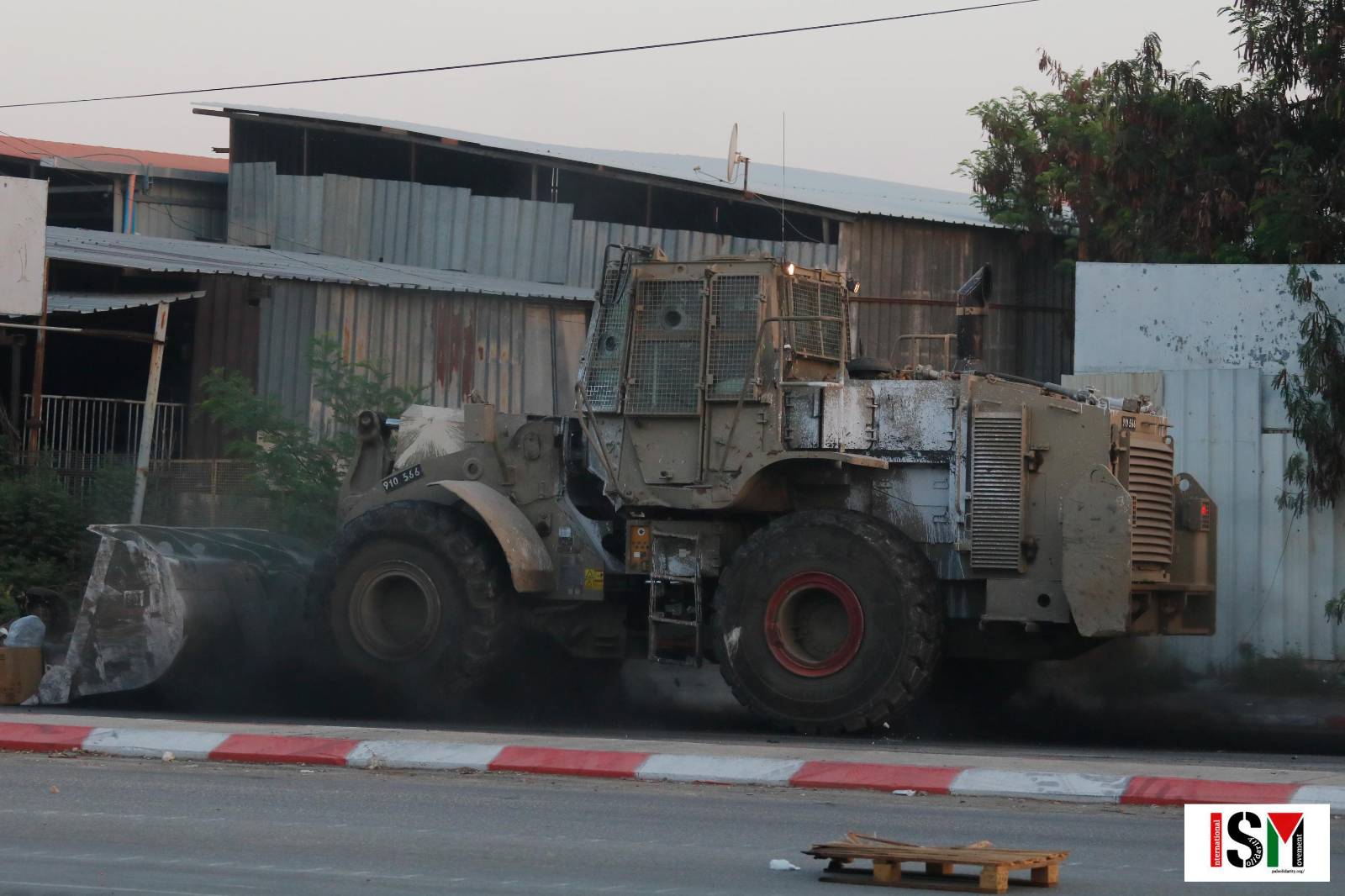-
Steadfastness in the face of occupation: A report on the attack on Nur Shams camp
Photos and text by Diana Khwaelid for ISM Residents of Tulkarm – and in particular the Nur Shams refugee camp – woke up to a sad morning on Tuesday 5th of September. Dozens of military vehicles, troop carriers, and three Caterpillar D9 military bulldozers accompanied by an Israeli police vehicle stormed the Nur Shams refugee […]
-
Autumn 2023 call to action: join us in Palestine during the olive harvest
As the olive harvest season approaches (starting in October until mid/late November), the International Solidarity Movement is calling all activists and supporters to join us on the ground in Palestine. While this is a period when Palestinian families get together in the field and celebrate harvesting, it is also a time of increased violence and […]
-
“The Palestinian cause is a cause for all free people in the world, regardless of their cultures, backgrounds, religions, or ethnicities” – an interview with Archbishop Atallah Hanna
On Wednesday, August 23, ISM volunteers met with Archbishop of Sebastia, Atallah Hanna, to discuss solidarity with the Palestinian struggle and the conditions of Palestinian Christians under the occupation. The Archbishop is an outspoken critic of the occupation and has been arrested in the past and had his passports seized by the IOF for his […]
Action Alert An Nabi Saleh Apartheid Wall Arrests BDS Bethlehem Bil'in Cast Lead Demonstration Denial of Entry Ethnic Cleansing Farmers Gaza Global Actions Hebron House Demolition International law Israeli Army Jerusalem Live Ammunition Nablus Ni'lin Prisoner Ramallah Rubber-coated steel bullets Settlement Settlers Settler violence Tear-Gas Canister Video



